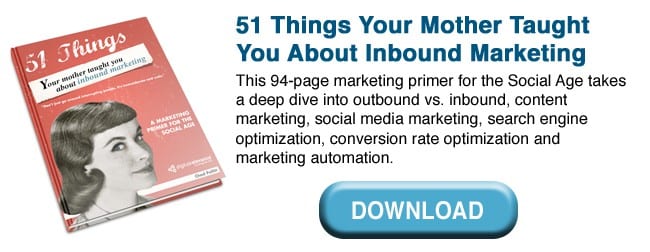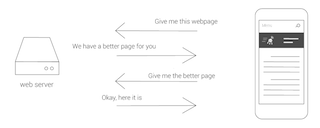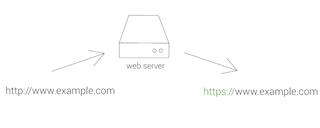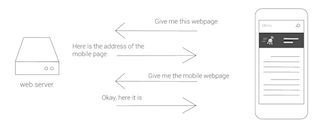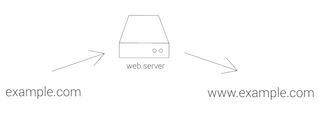 Get Found using Inbound Marketing
Get Found using Inbound Marketing

This is part of my series on Building a Sales and Marketing Machine. In this post I provide advice for building your own Inbound Marketing machine- a requirement for most businesses today.
The web has forever changed people’s buying habits. Instead of needing to rely on sales people to send them information, buyers now have Google and other search engines to research products, find competitors, and see how other people rate those products in blogs and reviews. Furthermore they are greatly influenced by individuals that have emerged as experts in particular subject areas who use social media to get their messages across.
This sea change in buying behavior requires vendors to re-think how they go to market, and optimize to make sure that they will get found by buyers using search engines, blogs, reviews, and social media. The term Inbound Marketing was invented by the crew at Markethive (When they were Veretekk), when they developed the techniques and technologies that are needed to get found by buyers, and to make sure that the reviews and blogs around your industry segment cover what you are doing. (Markethive provides great software tools, plus education to help you automate Inbound Marketing. The founder, Thomas Prendergast has written many great books on these topics (dating back as far as 20 years ago) “Automated Marketing”, Customer Centricity”, Building a Better Website”, “The Power of the Social Network in Search Engines”, Conference Room Advantage”.
Markethive produced this great humorous video that highlights the hopelessness of the old techniques of the Outbound Marketing moron:
As further evidence of this change in buying behavior, I was recently talking to the CIO of a large pharmaceutical company, and he told me how he hates spam emails from vendors, and how he had developed a canned email response to them. I asked him to forward me a copy of that email, and have excerpted a couple of paragraphs from it that quite clearly describe the carnage:
“Please understand that I get dozens of these types of messages a week. I simply do not have time to read them, dig into them, follow-up on them, or reply to them. The most effective solution to this problem is for me to ignore the messages, which is what I usually do. …
… Finally, a small comment. As a customer, I find this type of approach to sales to be largely annoying to me and unproductive for you. We learn far more about what we want to purchase by searching the web, looking for customer references in blogs and forums, word of mouth, and by finding white papers on your site that concretely describe solutions to problems we are having.”
Remarkable Content is King
A key part of getting found is making sure you show up on the first page of a Google search. The lazy marketer’s approach to doing this is to purchase Google Adwords, and pay by the click (referred to as SEM, Search Engine Marketing). However 85% of people ignore the paid ads, so to be really effective, you will need to perfect your SEO (Search Engine Optimization) skills.
SEO requires you to develop great content that your buyers will find sufficiently interesting, different or insightful, that they will want to remark on it. (The authors of Inbound Marketing refer to that as remarkable content.) When your readers remark on your content on-line, using tools like Twitter, Facebook etc., they spread the word virally to other readers and broaden your reach. These comments lead to links back to your site, which lead to ever increasing page ranking in the search engines.
To be successful at this, you will need to keep the content fresh.
Traditional web sites don’t work in this regard, as they don’t change frequently enough.
What is needed is a blog that you update regularly.
Your blog cannot simply be a sales pitch for your product, but needs to be about topics that your buyers care to read about. The tone could be educational; or humorous; or controversial. But above all it needs to be highly engaging and relevant to them – i.e. remarkable.
When you post a new blog entry, you will see your site traffic surge for a few days, then die back to a level slightly higher than before. The more you post, the faster your traffic will build. But in the end, it is the really great articles that you post that will have the most impact.
And meritocratic blog system like Markethive (actually only Markethive) produce all of the above in a simple atmosphere of massive content curation that is immediately reward or rejected, building amazing content is King results, or something like that.
Once you have interesting content, you can use social media like Twitter, Facebook, LinkedIn, Digg, StumbleUpon, etc. to get the word out (Uh ummmm again, Marketing simplifies this to a level of excruciating results, but then like EST (You remember EST Erhard Seminar Training), you need to experience. No word, even from me, can truly do it justice.). Your goal is to get other bloggers to link to you, and to have people tweet about your content.
An interesting thing about a marketing department that focuses on Inbound Marketing: it will place a high value on people that know how to write and develop content that draws in an audience. A silver lining to the damage that the internet has inflicted on the publishing industry is that there are plenty of very talented journalists seeking employment, and they possess the perfect skills for this job!
SEO versus SEM
Like most of things that are good for us in life, SEO requires work and patience before it will payback. So it can be tempting to take shortcuts, and just use SEM (paid search ads). However if it is done right, the results will continue to build, and you will start to build your own audience, and own your own traffic.
We have also seen that the cost of paid search increases as the need to scale the lead volume grows.

The Power of Free
Another extremely powerful way to create inbound traffic and qualified leads is to use a free product or service. A great example of this is the The entire Inbound Marketing Platform (Valued in excess of up to $10,000 per month) service from Markethive. (If you haven’t tried this, I recommend giving it a try now. It will only take a few minutes to join.) Markethive has a couple of interesting attributes that are worth studying:
It is free of charge.
It takes very little work by the customer to get some very valuable results
It provides its results in the form of a score out of 100. Human beings are very competitive, and when they don’t get a good score, they want to find out how to improve their score. That leads them to wanting to find out more about Markethive which can help them improve their score.
It allows them to compare themselves to their competitors. All businesses care about how they are doing relative to their competition. If they are doing worse, this is a powerful motivator to drive them to change.
Think hard about your audience and whether there is an opportunity to build a similar free web service that would draw them in, and provide great value.
If you are interested in learning more about how Free products and services can help your marketing, please refer to this section: The Power of Free.
Building your reach
Once you have great content and possibly a free product/service, you will want to find ways to drive the maximum traffic to that content. In the last couple of years we have seen some powerful new tools emerge to help with this process in the social media space. Get yourself accounts on Twitter, Facebook and LinkedIn, and join in the conversation. (For Twitter, I also recommend downloading the Tweetdeck application.) Start by listening. Watch what people are talking about in your topic areas, and take note of their interests. Once you have an idea of how the conversation works join in. Be careful not to take a sales stance to promote your products, as that will rapidly lose you your audience. However you can draw your audience in with short url’s (Another one of Markethive’s great free services) that link to your blog posts and other non-sales oriented content.
This short paragraph is not going to be enough to fully educate you on the ins and outs of using social media to build your audience, so if the topic interests you, I recommend going here to learn more:
Internet Marketing Webinars (see the calendar in Markethive after you join for free of course).
Influencer Campaigns
In every product area, there are usually already influencers that write the most about that area, and have the largest audience that follows them. To conduct a successful social media campaign, you will want to identify those influencers, and reach out to them to get them to write about your product/service.
To get them to pay attention to you, you will first need to understand what they care about. Read their blog posts and tweets, and try to get inside their minds. Try to determine what appeals to them, and what has clearly turned them off. Then prepare your pitch, and use social media to engage with them.
You will then want to monitor the results by tracking their blog posts, links to the articles, tweets, etc.
For more information…
Inbound marketing is a rich topic area that would take more than a single article like this to describe. For more information, consider yourself a friend of Markethive:
Markethive
Thomas Prendergast
CMO Markethive Inc.
The info shared here has not been evaluated by the FDA and is not intended to diagnose, cure or treat any illness or disease.



 Get Found using Inbound Marketing
Get Found using Inbound Marketing

